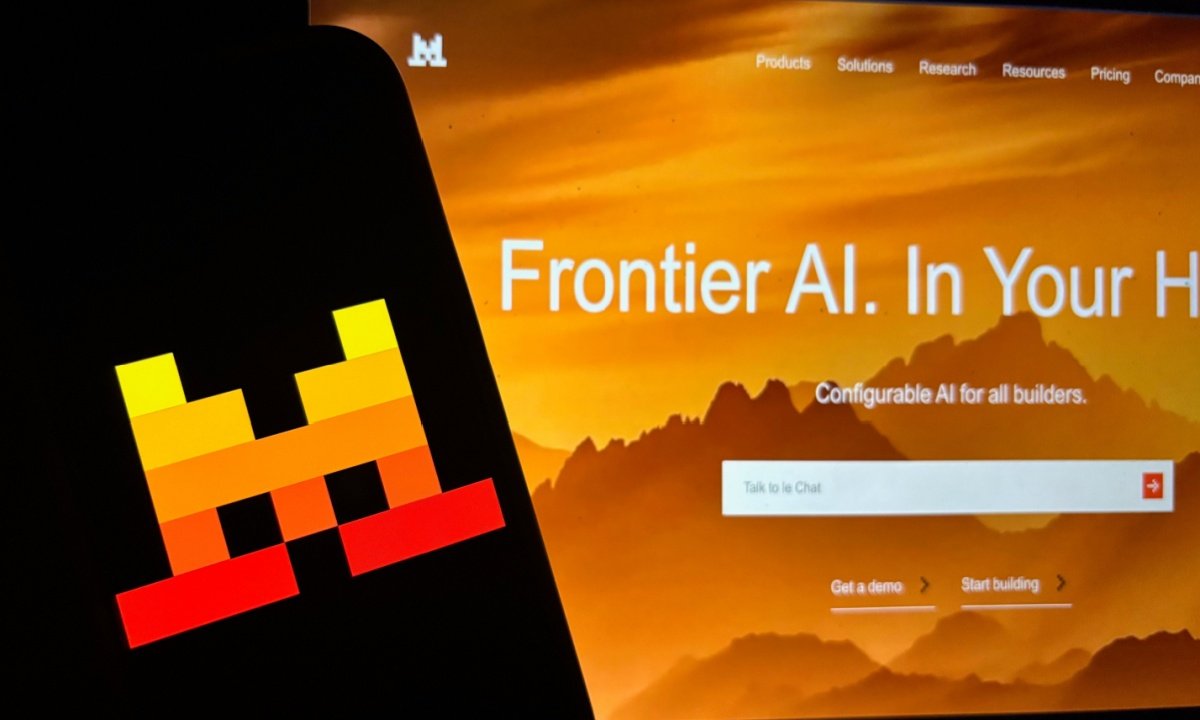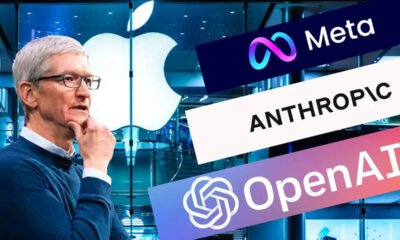AI Research
Zuckerberg Was Wrong About the Metaverse. Can We Really Trust Him With Superintelligent AI?

Mark Zuckerberg once sold us the metaverse. Now he wants us to believe he’s going to lead us into the age of superintelligence. Should we fall for it again?
Elon Musk once called him “Zuck the Fourteenth,” a jab comparing Meta’s CEO to France’s King Louis XIV—a monarch infamous for his ego, extravagance, and disregard for limits. It’s a fitting label, especially as Zuckerberg floods the headlines, positioning himself as Silicon Valley’s new AI king.
But let’s rewind.
Just a few years ago, Zuckerberg declared that the metaverse was the future of humanity. In a slickly produced video released on October 28, 2021, he rebranded Facebook as Meta Platforms and declared, “The metaverse is the next frontier.” It was a bold new vision: a 3D immersive virtual world where we would live, work, and socialize as digital avatars using Meta-manufactured VR headsets and smart glasses.
Meta poured nearly $20 billion into Reality Labs, the division tasked with building this digital utopia, in a single year. The promise? A seamless escape from the real world into a vibrant virtual one.
But the promised land never arrived. Despite the investment, the user adoption didn’t follow. Horizon Worlds, Meta’s flagship metaverse platform, struggled to retain interest. The headsets were clunky, the software buggy, and the use cases unclear. People didn’t want to live in VR. The metaverse flopped.
Now, Zuckerberg wants the public, and the tech world, to believe he’s leading the charge into the next big thing: artificial general intelligence, or AGI. This is the holy grail of AI. A moment when machines surpass human intelligence across nearly all tasks. It’s what some call superintelligence, and it’s no longer just science fiction.
But there’s a problem. Meta is not leading. OpenAI, Google’s Gemini, and China’s DeepSeek have pulled ahead with more advanced models and tools. Meta’s LLaMA models are competent, but not groundbreaking. The company’s biggest claim to fame in the AI arms race so far? Making its large language models open source.
Now Zuckerberg is trying to change that by opening his wallet.
In what’s becoming an aggressive poaching campaign, Meta has started offering “giant offers” to top AI researchers. According to OpenAI CEO Sam Altman, some of these offers exceed $100 million. Meta has already lured away key talent, including Alexandr Wang (founder of Scale AI), Nat Friedman (former GitHub CEO), and OpenAI veterans like Shengjia Zhao, Shuchao Bi, Jiahui Yu, and Hongyu Ren.
Zuckerberg isn’t hiding it. He recently announced the creation of Meta Superintelligence Labs, an ambitious effort to consolidate AI efforts under one roof and leapfrog the competition. In his internal memo, he promised that Meta will lead the way in delivering personal superintelligence, an AI that can manage your life, schedule your time, guide your decisions, and essentially act as a personal brain assistant.
And he’s made it clear: he’s not done hiring.
It’s a dramatic pivot and a savvy one. AI is no longer hype. It’s here, and it’s transforming everything from how we work to how we think. Whether you fear it or embrace it, AI is shaping the next phase of human life.
But that doesn’t mean Zuckerberg gets to be its face.
After all, this is the same executive who once told the world that a legless cartoon avatar in VR was our future. The same person who sank tens of billions into a virtual world that no one wanted. Now he’s asking us to trust him on AGI, a technology that could reshape the world, economies, and the future of human labor.
Zuckerberg isn’t an AI visionary. He’s a ruthless competitor who spots the next big thing and tries to buy his way to the top. He couldn’t beat TikTok, so he cloned Reels. He couldn’t acquire Snapchat, so he copied Stories. Now he’s applying the same playbook to AI: buy the best people, sell a big vision, and hope the world forgets what happened last time.
If anything, his pivot to AI is proof of just how serious this moment is. Because when Zuckerberg starts spending, it’s not out of curiosity. It’s because he smells dominance.
And that might be the most compelling reason to pay attention.
Not because he’s leading the way in building artificial superintelligence, but because he’s trying to control who gets to build it, and what rules they play by.
AI Research
AI to reshape India’s roads? Artificial intelligence can take the wheel to fix highways before they break, ETInfra

In India, a pothole is rarely just a pothole. It is a metaphor, a mood and sometimes, a meme. It is the reason your cab driver mutters about karma and your startup founder misses a pitch meeting because the expressway has turned into a swimming pool. But what if roads could detect their own distress, predict failures before they happen, and even suggest how to fix them?
That is not science-fiction but the emerging reality of AI-powered infrastructure.
According to KPMG’s 2025 report AI-powered road infrastructure transformation- Roads 2047, artificial intelligence is slowly reshaping how India builds, maintains, and governs its roads. From digital twins that simulate entire highways to predictive algorithms that flag out structural fatigue, the country’s infrastructure is beginning to show signs of cognition.
From concrete to cognition
India’s road network spans over 6.3 million kilometers – second only to the United States. As per KPMG, AI is now being positioned not just as a tool but as a transformational layer. Technologies like Geographic Information System (GIS), Building Informational Modelling (BIM) and sensor fusion are enabling digital twins – virtual replicas of physical assets that allow engineers to simulate stress, traffic and weather impact in real time. The National Highway Authority of India (NHAI) has already integrated AI into its Project Management Information System (PMIS), using machine learning to audit construction quality and flag anomalies.
Autonomous infrastructure in action
Across urban India, infrastructure is beginning to self-monitor. Pune’s Intelligent Traffic Management System (ITMS) and Bengaluru’s adaptive traffic control systems are early examples of AI-driven urban mobility.
Meanwhile, AI-MC, launched by the Ministry of Road Transport and Highways (MoRTH), uses GPS-enabled compactors and drone-based pavement surveys to optimise road construction.
Beyond cities, state-level initiatives are also embracing AI for infrastructure monitoring. As reported by ETInfra earlier, Bihar’s State Bridge Management & Maintenance Policy, 2025 employs AI and machine learning for digital audits of bridges and culverts. Using sensors, drones, and 3D digital twins, the state has surveyed over 12,000 culverts and 743 bridges, identifying damaged structures for repair or reconstruction. IIT Patna and Delhi have been engaged for third-party audits, showing how AI can extend beyond roads to critical bridge infrastructure in both urban and rural contexts.
While these examples demonstrate the potential of AI-powered maintenance, challenges remain. Predictive maintenance, KPMG notes, could reduce lifecycle costs by up to 30 per cent and improve asset longevity, but much of rural India—nearly 70 per cent of the network—still relies on manual inspections and paper-based reporting.
Governance and the algorithm
India’s road safety crisis is staggering: over 1.5 lakh deaths annually. AI could be a game-changer. KPMG estimates that intelligent systems can reduce emergency response times by 60 per cent, and improve traffic efficiency by 30 per cent. AI also supports ESG goals— enabling carbon modeling, EV corridor planning, and sustainable design.
But technology alone won’t fix systemic gaps. The promise of AI hinges on institutional readiness – spanning urban planning, enforcement, and civic engagement.
While NITI Aayog has outlined a national AI strategy, and MoRTH has initiated digital reforms, state-level adoption remains fragmented. Some states have set up AI cells within their PWDs; others lack the technical capacity or policy mandate.
KPMG calls for a unified governance framework — one that enables interoperability, safeguards data, and fosters public-private partnerships. Without it, India risks building smart systems on shaky foundations.
As India looks towards 2047, the road ahead is both digital and political. And if AI can help us listen to our roads, perhaps we’ll finally learn to fix them before they speak in potholes.
AI Research
Mistral AI Nears Close of Funding Round Lifting Valuation to $14B

Artificial intelligence (AI) startup Mistral AI is reportedly nearing the close of a funding round in which it would raise €2 billion (about $2.3 billion) and be valued at €12 billion (about $14 billion).
AI Research
PPS Weighs Artificial Intelligence Policy

Portland Public Schools folded some guidance on artificial intelligence into its district technology policy for students and staff over the summer, though some district officials say the work is far from complete.
The guidelines permit certain district-approved AI tools “to help with administrative tasks, lesson planning, and personalized learning” but require staff to review AI-generated content, check accuracy, and take personal responsibility for any content generated.
The new policy also warns against inputting personal student information into tools, and encourages users to think about inherent bias within such systems. But it’s still a far cry from a specific AI policy, which would have to go through the Portland School Board.
Part of the reason is because AI is such an “active landscape,” says Liz Large, a contracted legal adviser for the district. “The policymaking process as it should is deliberative and takes time,” Large says. “This was the first shot at it…there’s a lot of work [to do].”
PPS, like many school districts nationwide, is continuing to explore how to fold artificial intelligence into learning, but not without controversy. AsThe Oregonian reported in August, the district is entering a partnership with Lumi Story AI, a chatbot that helps older students craft their own stories with a focus on comics and graphic novels (the pilot is offered at some middle and high schools).
There’s also concern from the Portland Association of Teachers. “PAT believes students learn best from humans, instead of AI,” PAT president Angela Bonilla said in an Aug. 26 video. “PAT believes that students deserve to learn the truth from humans and adults they trust and care about.”
Willamette Week’s reporting has concrete impacts that change laws, force action from civic leaders, and drive compromised politicians from public office.
Help us dig deeper.
-

 Business5 days ago
Business5 days agoThe Guardian view on Trump and the Fed: independence is no substitute for accountability | Editorial
-
Tools & Platforms3 weeks ago
Building Trust in Military AI Starts with Opening the Black Box – War on the Rocks
-

 Ethics & Policy1 month ago
Ethics & Policy1 month agoSDAIA Supports Saudi Arabia’s Leadership in Shaping Global AI Ethics, Policy, and Research – وكالة الأنباء السعودية
-

 Events & Conferences4 months ago
Events & Conferences4 months agoJourney to 1000 models: Scaling Instagram’s recommendation system
-

 Jobs & Careers2 months ago
Jobs & Careers2 months agoMumbai-based Perplexity Alternative Has 60k+ Users Without Funding
-

 Education2 months ago
Education2 months agoVEX Robotics launches AI-powered classroom robotics system
-

 Funding & Business2 months ago
Funding & Business2 months agoKayak and Expedia race to build AI travel agents that turn social posts into itineraries
-

 Podcasts & Talks2 months ago
Podcasts & Talks2 months agoHappy 4th of July! 🎆 Made with Veo 3 in Gemini
-

 Podcasts & Talks2 months ago
Podcasts & Talks2 months agoOpenAI 🤝 @teamganassi
-

 Education2 months ago
Education2 months agoAERDF highlights the latest PreK-12 discoveries and inventions





















